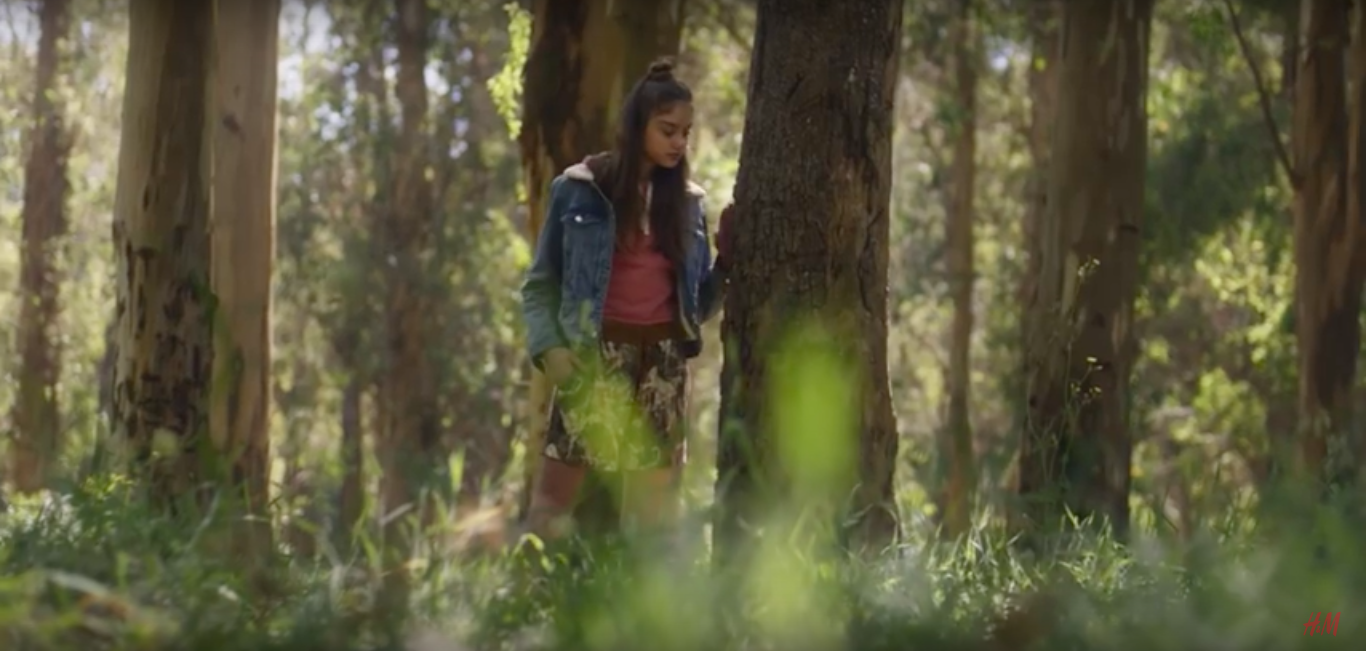Textual Analysis - H&M 'Bring It On'
Camera
The overall focus throughout the video is on the clothes and their fabrics, whether they are being worn or recycled. The camerawork uses a number of varied methods to help the audience focus on the clothes throughout. By using long shots to show a full outfit or a close us to emphasise the fabric or it tearing. The focus on the clothes tearing and being mangled can give off a rough feel; H&M manages to emphasise this through their use of a hand held camera. This constant unsteadiness allows for a less neat feel, which is what the ad tries to convey at the start with the damaging of clothes.
Sound
The ad consists of a number of diegetic and non-diegetic pieces of sound. The non diegetic sound features a soundtrack and a voiceover in the form of a narrative. The soundtrack is piece of music that builds in intensity throughout the ad by adding layers to the music until a climax. This allows the video to have an intense and empowering feel throughout, it represents recycling as an almost revolutionary process. This is to get more people involved and excited by the idea of it and get involved. The voiceover is a poem that narrates what happens in the ad and informs the audience of what their cause is. The narrator Kate Tempest is well know for her powerful poems, this reputation she holds can be used to help reflect the atmosphere of the advert. The diegetic sound is used for the ripping of clothes and working of machines. These are the main features of the ad and the sound alongside them helps emphasise them to the audience.
There is one scene in the ad which the diegetic and non-diegetic sound is different to the rest of the ad. It marks the turning point of the ad, from the ruined clothes section to the recycling. They make this point clear through sound by using a calmer soundtrack and include the diegetic sound of birds chirping and trees rustling. This sound contrasts to what has be heard previously and illustrates H&M’s principles of being clean and natural.
(Camera - the camerawork for this forest scene allows for a more steady and calming feel also. The camera remains much more steadier than previous shots and allows the audience almost ‘catch their breath’ when watching this shot)
Editing
The editing plays a large part to the overall feel of the video; to begin with, the editing is fast paced to make something as simple as ripping a pair of jeans exciting for the audience. Most of the video is in real time, not slow motion to keep up the fast pace of the ad. The shots are in time to the narrator’s poem, which makes it easier for an audience to follow along. At the forest scene, the editing is also different to make it clearly contrast to the rest of the video; the shot is a little longer than the other shots which helps the reader catch up with the pace of the ad. It also brings more emphasis on this scene so that the audience can clearly understand H&M’s principles. After this scene, the video begins to focus more on the recycling process. H&M uses fast paced editing when shooting the machines at work, but slower paced editing when showing the people wearing their clothing; this is to put more emphasis on the final product an audience will receive through this recycling process.
Mise en scene
The video features a lot of young people, this is done on purpose to attract H&M’s target audience and get them involved with their cause. They use a number of varied items of clothing to allow the largest audience possible to gain an interest in their clothing range and also relate to everyone who has experienced damaging their clothes, whether it be jeans, tops, pants etc. the in the ad work well with each other and give off an aesthetic feel. The colours throughout are exciting and bold which will gain an audiences interest much more effortlessly.
One scene that stands out, especially through miss en scene, is when a group of young adults pack up a number of sacks and go out into the night to recycle them. This is not a very typical sight in todays world, but using these features gives a sense to the audience that recycling isn’t a boring chore, its almost revolutionary and powerful.
Near the end of the video, a ‘garment collection box’ is shown to clearly get across to the audience what they must do if they want to get involved.



Comments
Post a Comment